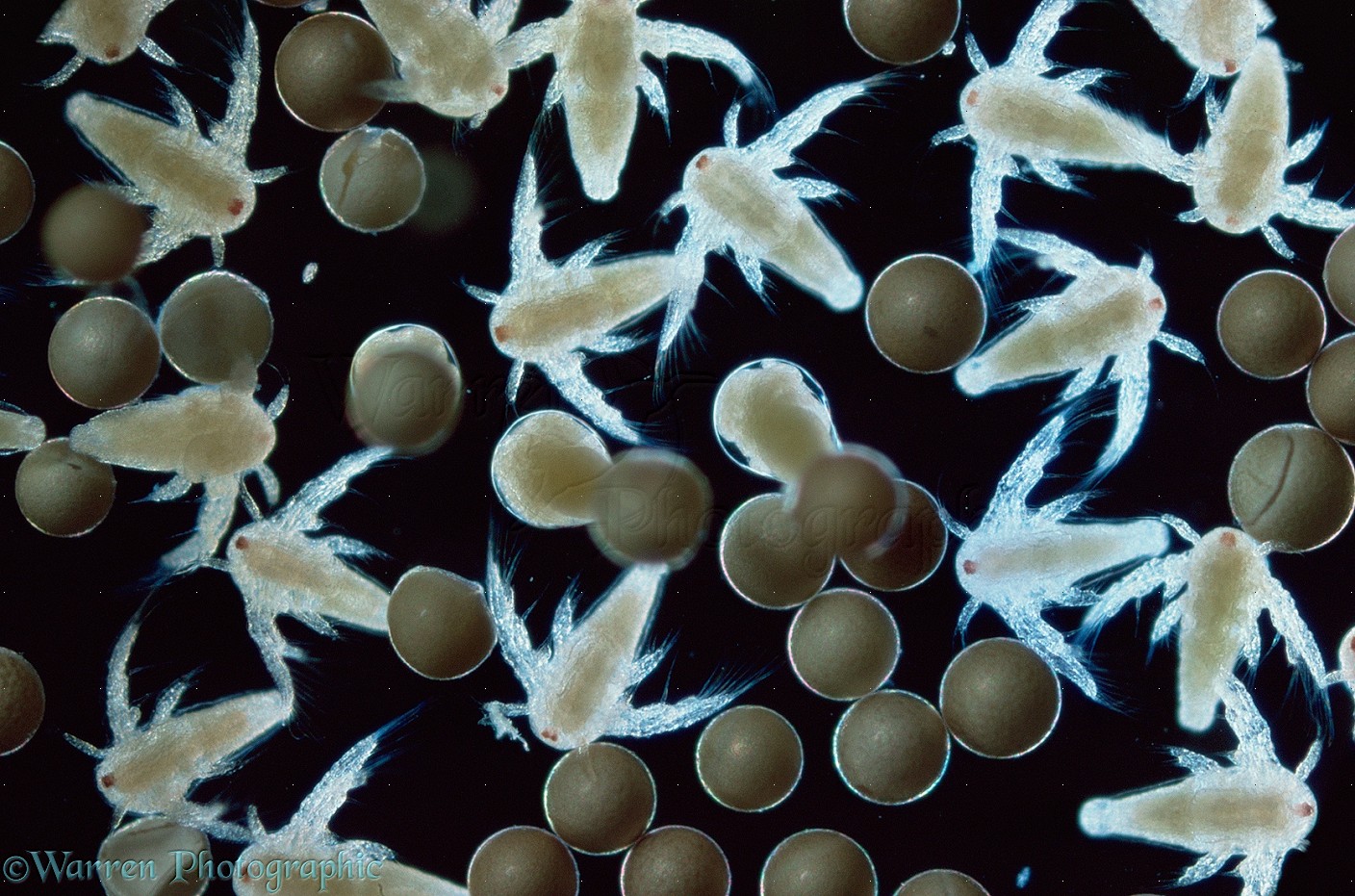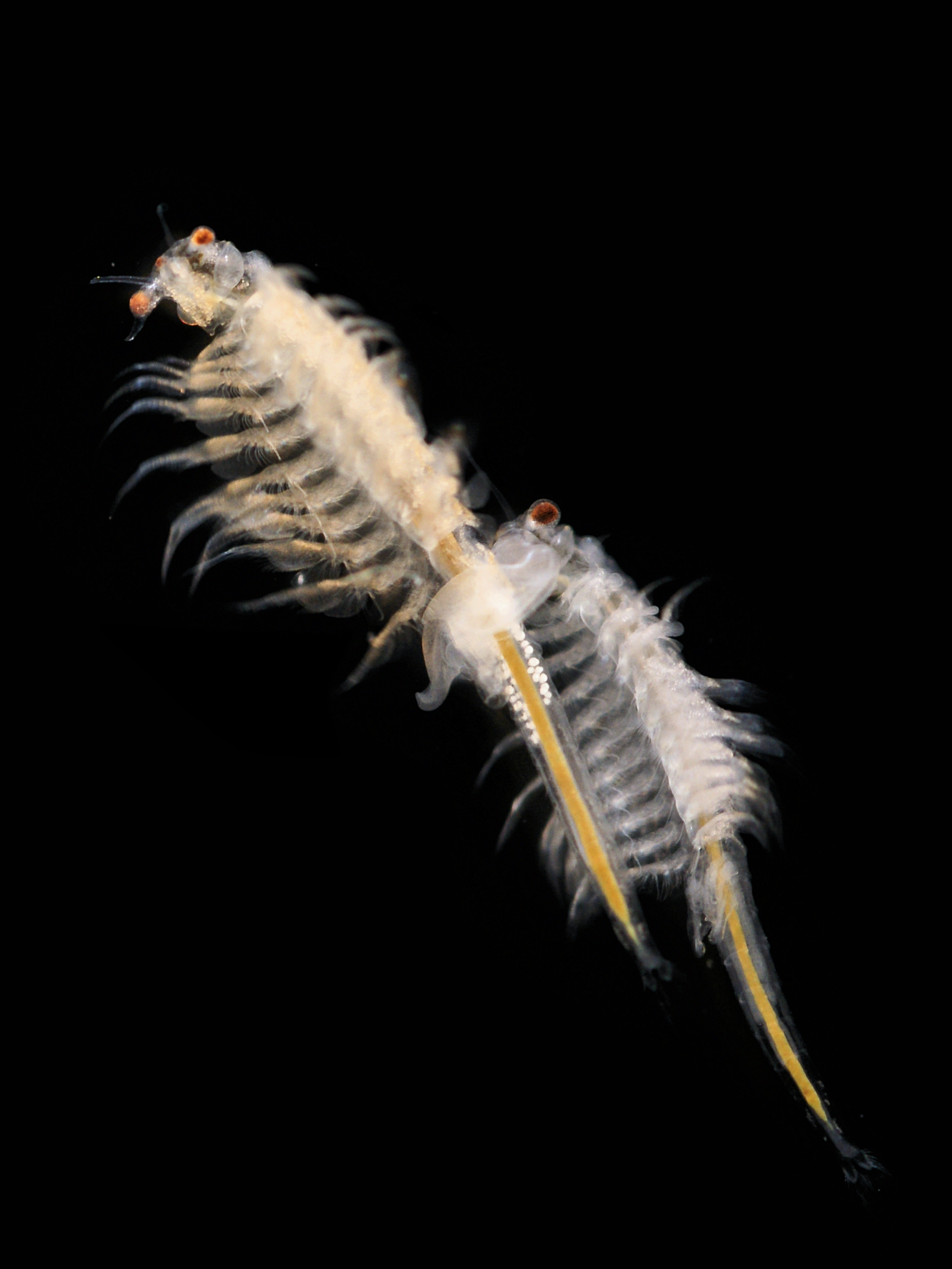You’ve seen brine shrimp in our Brain Briny kits, but we think it’s time you get to know a little more about the life of a common brine shrimp.
Brine shrimp start as small cysts (the cysts that come in your brainy briny kits). These cysts contain embryos. There are different types of cysts: ‘dormant’ or ‘summer’ cysts. Dormant cysts and can remain unhatched for years, surviving harsh conditions with a tough, protective shell around the embryos. As the weather grows warmer, these dormant cysts absorb water and begin to hatch. Summer cysts hatch quickly after release, having only a thin membrane protecting the embryo.
After hatching, the brine shrimp are in the larval stage, called nauplii (singular nauplius). The nauplius are merely swimming heads with an undeveloped trunk, they use their single eye to go towards light in order to find food. The nauplius will eat whatever algae, bacteria, or debris it can fit into its mouth parts, using its antennae to swim towards and move material into its mouth. As the brine shrimp continue to grow, their trunks grow longer, paddle- like limbs (thoracopods) are developed, and two compound (bug-like) eyes are developed. These developments allow the brine shrimp to swim faster and see more clearly.

In the juvenile stage, the brine shrimp look like small adults. Their thoracopods are fully functional, and those limbs take over the swimming, breathing, and feeding actions the antennae used to do. The antennae also shrink, for they are not needed as much. The males and females begin to develop differently in this stage. Females begin swelling below their limbs, developing a ‘brood sac’, while male antennae grow into ‘claspers’ to hold onto females during mating.
In the adult stage, male and female brine shrimp are easy to tell apart. Females are larger than males, and have visible brood sacs. Males do not have brood sacs, amd have claspers on top of their heads.

During mating, the male brine shrimp holds onto the female with his claspers, and fertilizes the eggs in her brood sac by depositing sperm into it. The female can live up to four months, and can produce up to 300 cysts every four days. Depending on the environmental conditions, the female will either release summer or dormant cysts, as discussed earlier.

Brine Shrimp can come to maturity in as little as 8 days, but conditions are never quite ideal, so the average length of the brine shrimp life cycle is 3-6 weeks.
- Erin F. Fox, 2019
See this amazing life cycle in action! https://algaeresearchsupply.com/collections/brainy-brinys
Source: University of Utah: Extreme Environments: Great Salt Lake



Share:
Saving the Planet, One Box at a Time
The Difference Between Flasks and Beakers